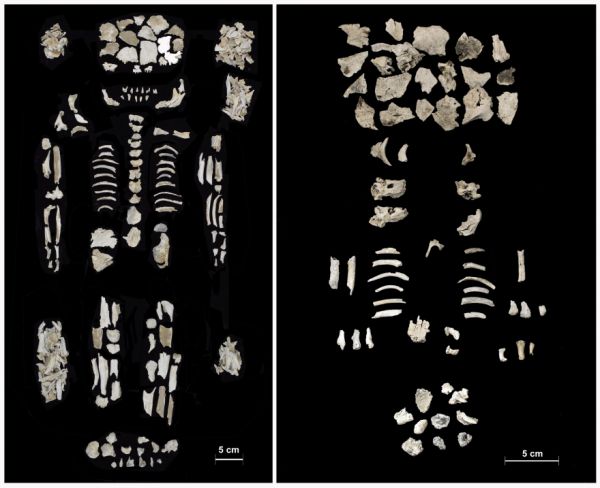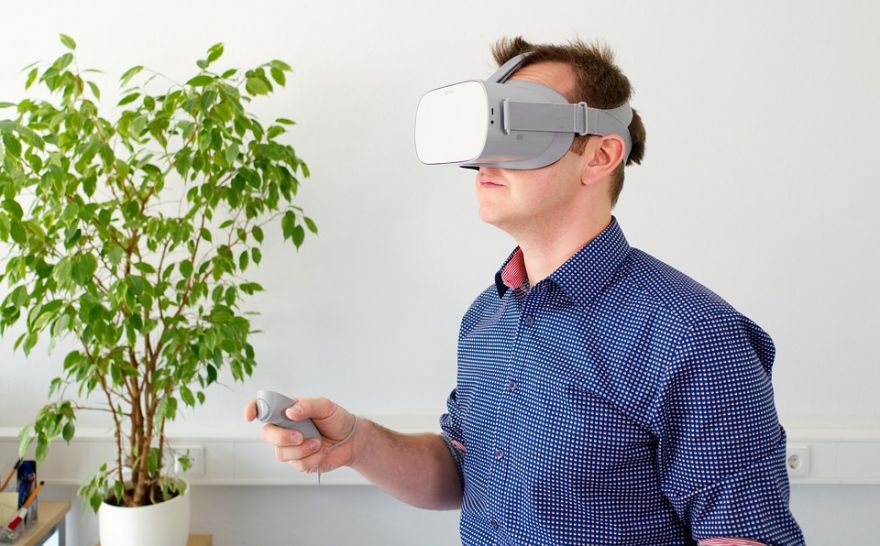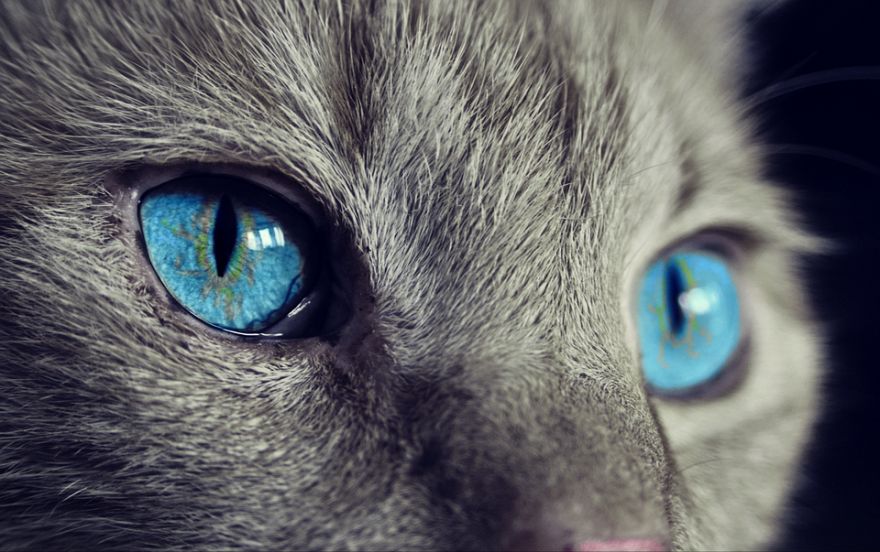Neatorama |
- Remains of High-Born Woman and Twin Fetuses Found in 4,000-Year-Old Urn
- Teaching Empathy Through Virtual Reality
- Smoking In World War II
- A Tale of Two Engines
- Our Similarities To Cats Lie In Our Genomes
- Welcome To The Micrarium: The Museum Dedicated To Microscopic Animals
| Remains of High-Born Woman and Twin Fetuses Found in 4,000-Year-Old Urn Posted: 02 Aug 2021 11:37 AM PDT
Archaeologists unearthed a couple dozen burials in a Bronze Age cemetery found near Budapest, Hungary. Most of them were urns filled with cremated remains, one of which stood out from the rest: the urn contained the cremains of three people! One was a woman of high status who had died in her 20s, and the other two were her twin fetuses.
You may find it astonishing that scientists could determine all that from cremated remains. The methods described in the original science paper go into much more detail on strontium levels across Europe 4,00 years ago, the parts of the teeth and bones that pick up those isotopes at what age, and how they extracted that information from bone fragments. Or you can read the short version at Smithsonian. -via Damn Interesting |
| Teaching Empathy Through Virtual Reality Posted: 02 Aug 2021 11:28 AM PDT
Film critic Roger Ebert likens movies to a "machine that generates empathy." And there is some truth in his statement. Films and other forms of art can, indeed, be a powerful tool in triggering empathy. But if you really want to trigger empathy in a person, one way would be to have the person experience what it's like to live in the shoes of another, and this could be made possible through the use of virtual reality. We found that VR was able to elicit empathy in a variety of settings," says Megan Brydon, PACS Application Specialist at IWK Health Centre in Halifax, Nova Scotia. She was the lead author of a new research survey published in Journal of Medical Imaging and Radiation Sciences, which found that VR could help medical professionals to cultivate greater empathy for their patients. The survey examined seven studies in which researchers used VR to encourage empathetic behavior in caregivers. They played the role of physician in some cases, along with patients diagnosed with conditions including breast cancer, cranial nerve injuries and dementia. [...] Even with a range of approaches, the studies consistently pointed to an uptick in empathic behavior following the VR experience. To Brydon, these consistent results point to the potential of virtual reality as a training tool for medical professionals. What made you feel empathy towards other people? (Image Credit: dlohner/ Pixabay) |
| Posted: 02 Aug 2021 11:28 AM PDT
Smoking is never a healthy hobby. I wouldn't recommend it, and doctors definitely don't, either. But in the days of World War II, Army aviator Lieutenant James Alter recalls, in his 2011 book titled From Campus to Combat, that "nearly everyone smoked." … considering the kind of work we were doing, no one would have been too worried about lung cancer even if we had known about it. What we did know was that Chesterfields satisfied; we'd walk a mile for a Camel; and just like us, Lucky Strike Green had gone to war." America supplied cigarettes to military men in stunning numbers during World War II. Philip Morris and other U.S. tobacco suppliers reported rolling and selling 290 billion smokes in 1943. In order to relieve boredom and improve the morale of fighting men, cigarettes came standard inside K-ration boxes along with candy and gum. If young soldiers and sailors wanted more, cigarettes were just 50 cents a carton or a nickel a pack. As a result, tobacco consumption skyrocketed during the war. In those days, smoking was a popular activity among people, and they smoked even in places that they're not supposed to, such as inside fighter planes. It was a clear fire hazard. After all, a warplane was a flimsy aluminum shell wrapped around a conglomeration of stuff that naturally wanted to burn or explode—fuel, hydraulic fluid, oil, oxygen, weaponry. Adding a lit cigarette to that mix was perilous. But at a time where the odds of getting killed instantly in a dogfight were much higher, smoking, which took decades to take effect, was an insignificant risk. More about this story over at Air and Space Magazine. (Image Credit: LOC via Air and Space Magazine) |
| Posted: 02 Aug 2021 11:27 AM PDT
In 1712, a man built the first successful steam engine, and his invention took the mining world by storm. Unlike other inventors, he was the first one to build a working steam engine that built upon (and improved) the principles and designs of those before him. For 60 years, his invention would prove to be the best technology out there, until another man came and built another steam engine in 1772. This other man, much like his predecessor, would improve upon the invention of the first man, and create a more superior steam engine. The two men in the story were Thomas Newcomen and James Watt, and the two engines were the Newcomen engine, and the Watt engine, respectively. The two of them did not meet, nor are they biologically related. But one, in a way, begat the other. Learn more about the story of the Newcomen and the Watt engine over at Cosmos Magazine. (Image Credit: Newton Henry Black, Harvey Nathaniel Davis/ Wikimedia Commons) |
| Our Similarities To Cats Lie In Our Genomes Posted: 02 Aug 2021 11:27 AM PDT
Humans and primates share a lot in common when it comes to genome organization. It is said that humans and chimps share 98.8 percent of their DNA. But aside from primates, which animal comes closest to humans in terms of genome organization? You might be surprised that one of the closest would be cats. Not dogs. Not mice. Cats. Dogs and mice, by contrast, have chromosomes that have been reshuffled over their respective evolutionary histories, making them more complicated to use as genetic analogues for our species. Cats' genomic similarity makes them more straightforward models for studying human diseases. It could also [help] scientists understand the genetic dark matter of our genomes—that is, non-coding DNA that doesn't provide instructions for making proteins yet still comprises some 95 percent of the human genome. Despite this similarity in genome organization, cat genetics specialist Leslie Lyons remarks that "cats are often underappreciated by the scientific community." "As we discover that perhaps animals have more similar spacing between genes and the genes are in the same order, maybe that will help us to decipher what's going on with humans," Lyons says in a statement. "Working with a primate is on the expensive side, but a cat's affordability and docile nature make them one of the most feasible animals to work with to understand the human genome." In light of this,... Lyons and her collaborators have… published the most detailed cat genome ever sequenced, reports James Gorman for the New York Times. This new genome is even more detailed than the most exhaustively sequenced dog genome. Surprising. (Image Credit: cocoparisienne/ Pixabay) |
| Welcome To The Micrarium: The Museum Dedicated To Microscopic Animals Posted: 02 Aug 2021 11:27 AM PDT
Did you know that nearly 95 percent of animal species are smaller than a person's thumb? It is pretty surprising that despite this fact, the usual animals that we see displayed in museums are those of vertebrates like monkeys, lions, and birds. Fortunately for us, there is the Micrarium inside The Grant Museum of Zoology at University College London. There are over two thousand slides on display in the Micrarium, lining the walls from floor to ceiling and lit from behind, allowing visitors to see details like the leg muscles of fleas and cross section of a fly. Of course, showcasing only the invertebrates would not represent the diversity of the animal kingdom, and so the Micrarium also displays the large animals such as mammoths and squids. But, similar to the tiny animals, the place presents these vertebrates in microscope slides. Though two thousand is a lot of slides, thanks to their size, the entire collection fits snugly inside a walkable closet-like thing that previously functioned as a storeroom. The ceiling is mirrored which gives the impression that the collection continues to infinity. In his 2013 tweet announcing the opening of the Micrarium, Jack Ashby, Manager of the Grant Museum of Zoology, states that the Micrarium wasn't built "for visitors to get specific insights into individual specimens or species." Rather, it was built "to appreciate the sheer vastness of invertebrate diversity." Now that's a place worth visiting at least once in your lifetime. (Image Credit: Kate McNab) |
| You are subscribed to email updates from Neatorama. To stop receiving these emails, you may unsubscribe now. | Email delivery powered by Google |
| Google, 1600 Amphitheatre Parkway, Mountain View, CA 94043, United States | |






No comments:
Post a Comment
Keep a civil tongue.